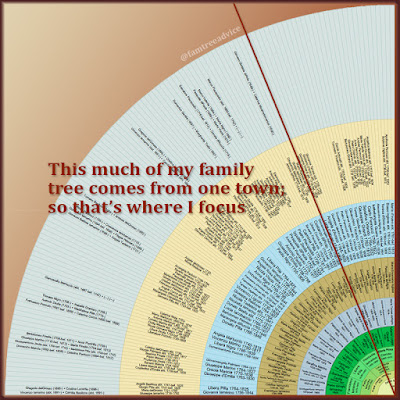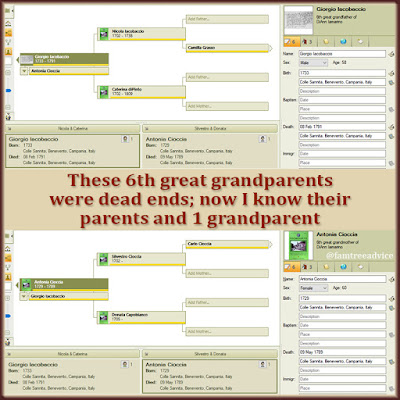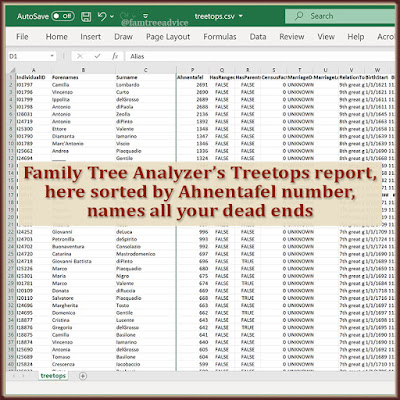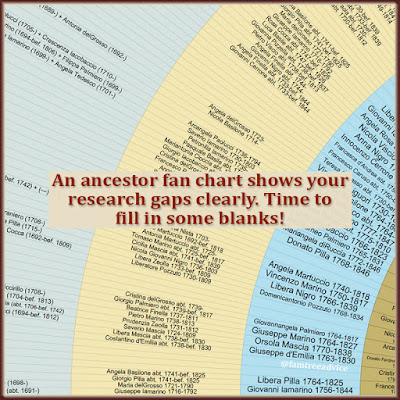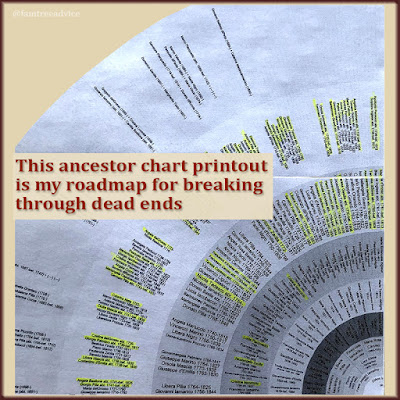Once in a while I spot them in the details of my family tree. Those questionable, unreliable sources.
When we're new to genealogy, we're more likely to borrow facts from the trees of strangers. It's a quick way to move things along. It can flesh out a more distant branch of relatives.
If you want your tree to be a reliable source for others, you cannot keep these lesser sources. You must trade them for the real thing. If it's an immigration fact, find that ship manifest and add the proper source. If it's a birth, marriage, or death record, track it down and record the source.
 |
| Our people deserve much better than the unreliable sources we're guilty of using. |
I needed an easy way to find all the low-quality sources hiding in my very large family tree file.
First I exported an up-to-date GEDCOM file. Not familiar with that term? It's a text file containing the names, facts, and relationships of everyone in your tree. Any decent family tree software can export a GEDCOM. If you keep your tree online only, you should be able to download a GEDCOM.
Next, I launched the free Family Tree Analyzer (FTA) program. It can tell you more about your family tree than you can imagine. Then I used FTA to open my new GEDCOM file.
On the program's Main Lists tab, I chose Sources. There I found a long list of every source in my family tree—309 of them. It showed me how many uses there are for each one. I clicked the top of the FactCount column to sort the sources from least used to most used. It won't surprise my regular readers that the bulk of my sources are from the State Archives of Benevento. That's where I find Italian vital records for my ancestors.
For me, it's the least used sources that are most likely to be unreliable. They're the ones I used early on, when I didn't know any better.
 |
| While I can see all my sources in Family Tree Maker, Family Tree Analyzer shows me how many times I'm using each one. |
I decided to replace the "Someone's Family Tree" sources first. They centered around my 4th cousin 5 times removed, Giovannangela Mascia. She was born in my Grandpa Iamarino's hometown in southern Italy. Her husband came from a nearby town, and that's where they raised their children.
I can't remember how I discovered this family in someone's tree years ago. But now there's no reason on earth for a stranger's tree to be my only source for these people. I have Giovannangela's birth and marriage records on my computer. They're in my collection of all the available records from Grandpa's hometown. Her husband and children's birth records are all available online.
It was time to replace every mention of "Someone's Family Tree" as the source for this family's facts. I started by finding Giovannangela's birth and marriage records on my computer. Then I found birth records for her husband and kids online. I added the document images to my family tree along with a proper source citation.
For her family, I attributed the facts to:
The State Archives of Campobasso
Birth records for (year) in Riccia, Campobasso, Campania, Italy
The exact URL where anyone can find the document
According to this other person's tree, part of the family came to America. I went to Ancestry.com to find their ship manifests for myself. One of Giovannangela's sons spent 14 years in Philadelphia before returning to Italy. He made a trip in 1901 to bring back his parents. I was very surprised by his parents' ages. Giovannangela was 75 years old, and her 83-year-old husband was senile.
They may be the oldest Italians I've seen coming to America. Both died a few years later.
Now I have a proper "New York, Passenger and Crew Lists" source citation for these facts. As I add these reliable sources, I can remove the unreliable source.
You may have developed good genealogy habits along the way, as I have. But your early work can cast doubt on the value of your family tree.
I encourage you to examine your source list and find any that you know are not high quality. Concentrate on replacing them one at a time. Pull your early work up to your current, more professional standards.
And speaking of those bad old sources:
